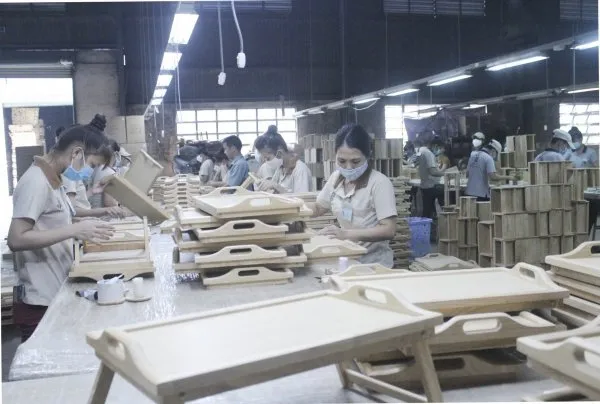
According to a Vietnam Customs report, in October 2019, export of wood products reached USD 1.03 bn, an increase of 22.7% compared to the same period last year. This is also being considered a record in the wood industry because the export value of wooden products exceeded USD 1 bn in only one month. In the first 10 months of 2019, the entire turnover of the wood industry reached USD 8.55 bn, an increase of 18.5% over the same period last year.
Considering its entire yearly turnover, including figures in the first half of November, the wood industry has recorded a turnover of USD 8.99 bn, which exceeded the turnover of 2018. The Wood Industry Association in many provinces, cities and local business enterprises made an indepth analysis of the figures, and found that the turnover of USD 11 bn is completely attainable this year because of high peak sales at the end of the year.
As for the key market for the Vietnamese wood industry, the United States continues to remain the top international market and also remains a priority for most Vietnamese wood enterprises. The US market has great demand for importing wood products up to USD 60 bn per year. In 2019, many US importers chose Vietnamese enterprises instead of Chinese businesses, because of more reasonable pricing and better quality of goods.
This is why the export turnover has grown by 34.5% in the first 10 months of 2019, reaching USD 4.19 bn, which also accounts for half of the total export turnover of the entire wood industry in Vietnam.
Another key market for Vietnam’s wood industry is Japan. Although Japan insists on very high quality products, Vietnamese enterprises have been able to satisfy the requirements of their Japanese customers by constantly and consistently improving on finished products.
Currently Japan is the second largest export market for Vietnamese wood products, with a turnover of USD 1.1 bn in the first 10 months of 2019. Outside of Japan, European countries and China are also potential markets for the Vietnamese wood industry.
Vietnam’s wood processing and export industry has grown extremely fast recently. Such rapid growth in some markets can pose many unseen challenges that need to be addressed and tackled effectively, especially in context of the ongoing US-China trade war, one of these being trade fraud.
Some signs show that trade fraud is becoming more and more complicated in business activities, including in the business of import and export. In addition to trade fraud, “illicit” investments or investments by foreign investors under the patronage of Vietnamese entities, is rising sharply.
To address this issue, the Vietnamese Government and other state agencies have issued strict regulations on prevention of trade fraud in commodity groups, especially wood products.
Specifically, the Vietnamese Customs officials issued document No. 5189/TCHQ - GSQL for preventing and tightening fraud in imports and exports, concerning fraud in base of origin, fake labeling of goods and illegal transfers. Accordingly, all containers of wood products from enterprises, including those of well-known enterprises, that are being exported to the US market, must pass through the red channel and be issued with a certificate of origin.
In terms of investments, according to a report on Forest Trends, China is now in leading position among list of countries investing in wood industry in Vietnam. In the first nine months of 2019, the number of Chinese projects in Vietnam totaled 40 new projects, but investment capital in these projects remained low, accounting for only 23.5% of total registered FDI capital in the wood industry.
This fact calls for Vietnam to review its policy in selecting FDI enterprises investing in the wood industry in Vietnam and reduce the risk of foreign investors dealing in any “illicit” investments or investments under the protection of Vietnamese patronage.




















